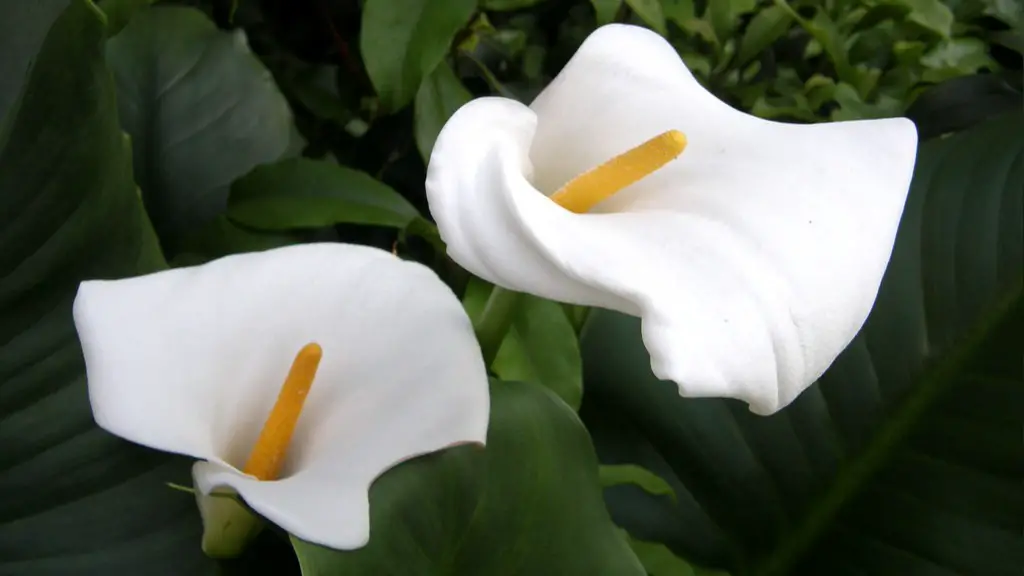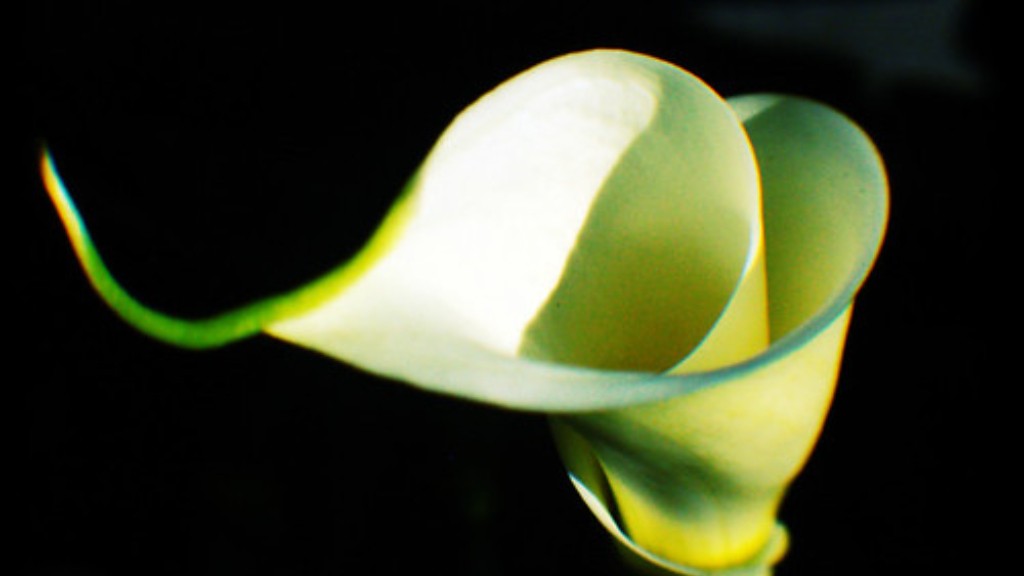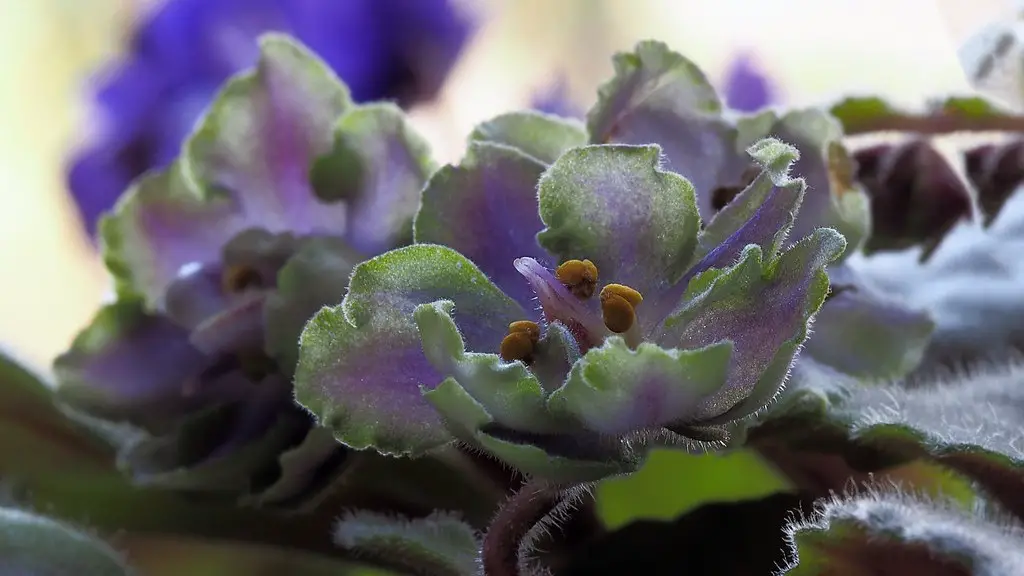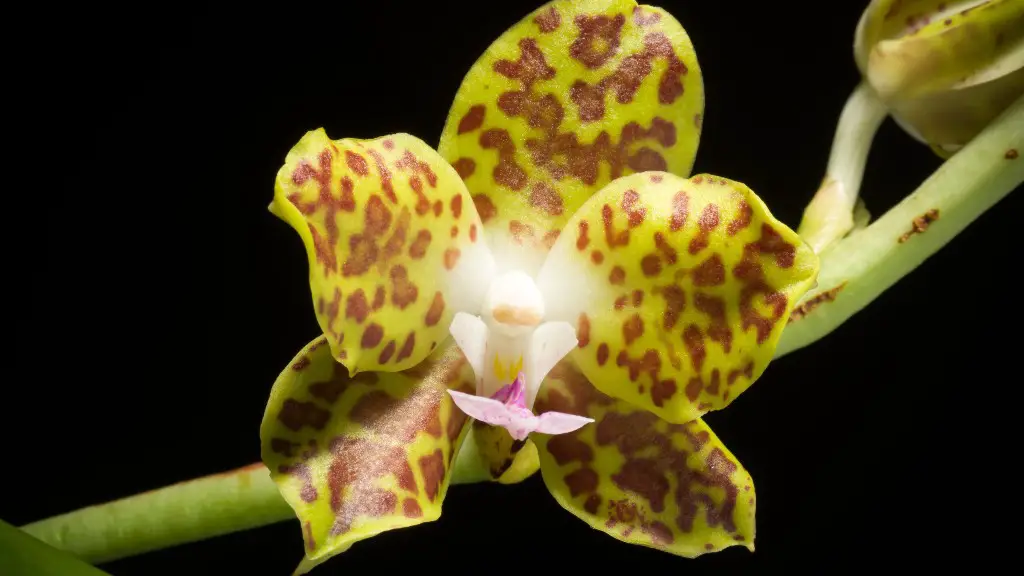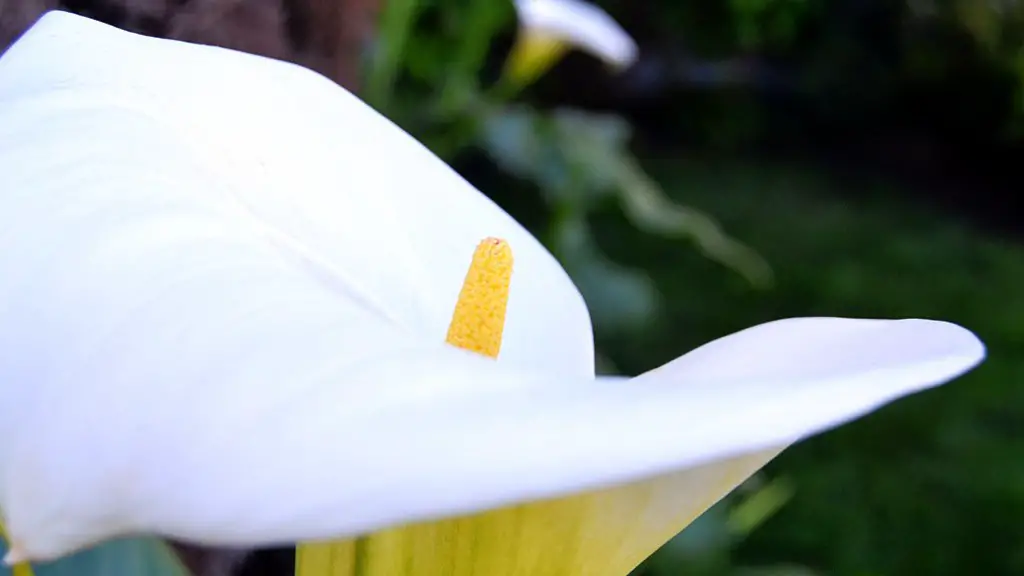Pruning a calla lily is a simple process that just requires a sharp knife and a little bit of knowledge. The first step is to identify the growth points on the plant, which are typically located near the base of the leaves. Once these growth points have been identified, the excess growth can be cut away using a sharp knife. It is important to make sure that only the excess growth is removed, as too much pruning can damage the plant.
It’s best to prune your calla lily after it has bloomed. Cut the stem back to about 6 inches (15 cm) above the ground. You can also cut off any yellow or brown leaves.
When should I cut back calla lilies?
When it’s starting to die back particular leaves you definitely want to cut them all back and not wait for the entire plant to die. This will help the plant to redirect its energy to the healthier leaves and prevent the spread of disease.
If you want to remove calla lily flowers for use in a bouquet, it is best to cut the stem near the base of the plant, making sure that none of the bare stem is sticking up through the leaves. This will leave a healthy plant with a stub of stem remaining.
How do you prune calla lilies for the winter
Calla lilies (Zantedeschia spp) are tender perennials. Their rhizomes must be dug up in fall and stored indoors over the winter months. After a killing frost, cut off the foliage 1 to 2 inches above the soil surface.
To make your Calla Lily last as long as possible, try to handle them as little as possible, taking extra care to avoid touching the flower heads themselves. Cut stems 1 inch on a 45-degree angle. Arrange your Calla Lilies in a vase with a maximum of 2 inches of water.
How far down do I cut my lilies?
Lilies are beautiful flowers that bloom in the summertime. Like tulips and daffodils, they need leaves to build up nutrients for the next season’s flowers. Cutting of individual blossoms does no harm. However, if you cut any lily, be sure not to take more than 1/2 to 2/3 of the stem (leaves) or they will not be able to rebuild themselves to bloom the following summer.
Here are a few tips for caring for callas indoors:
– Keep the soil moist, but not soggy
– Provide bright, indirect light
– Apply liquid fertilizer monthly while in flower
– Keep away from heating and A/C vents
– Reduce watering when the plant enters dormancy (November)
– Cut the leaves off at soil level once they’ve died
How many years will calla lilies bloom?
It is generally recommended that you wait two or three years before expecting calla lily flowers from seedlings. This is because they can take a while to mature and produce flowers. However, seedlings should emerge after a few weeks, so you will know if they are growing properly. Just be patient and wait for the flowers to appear!
It’s best to wait until the lily blooms have died down and turned brown before removing the stem. Leaves play an important role in providing nourishment to the bulb for next season’s blooms, so it’s important not to cut them back until the end of their season.
Should I cut my calla lilies back in the fall
Calla lily rhizomes should be lifted in fall after the first frost kills back the foliage. They should be stored for winter and then replanted in spring after soil temperatures warm up.
When tidying up lilies, be sure to leave as much main stem and as many leaves as possible. This will help the bulb build up its food reserves for next year. Cut back the lily flowerheads to just above a pair of leaves.
How do you winterize a calla?
Gardeners in warm climates can leave calla rhizomes in the ground over the winter. Otherwise, remove the leaves from your plants and cut the stems to one to two inches tall before your first freeze. Dig up the rhizomes and put them in a warm, dry place where the temperature stays between 65 and 75°F.
“Cut back your lilies when the green disappears and they turn yellow or red. This signals that the leaves are no longer feeding the bulbs. Just make a quick snip of the stalk near the soil line, and you’re done.”
Do I need to deadhead calla lily
And hearty to zone seven to ten they directly grow from rhythms And it’s easier than growing itMore
It’s easier than growing it indoors and inmuch heartier in colder climates. When growing it outdoors, make sure to plant it in an area that gets full sun and has well-draining soil.
To ensure your calla lilies look their best, it’s important to properly hydrate and care for them. After hydrating, use sharp scissors or a kitchen knife to slant cut the calla lilies under water to your preferred length. If possible, leave some of the stems’ white part, which helps prevent splitting as they get older. When placing them in a vase, use 2 inches of water mixed with flower food. By following these simple tips, you’ll be able to enjoy your calla lilies for longer.
What month do you divide calla lilies?
Most growers prefer to divide calla lilies in spring, especially in warm climates where the rhizome can be left in the ground year-round. In cooler areas, division of the rhizomes might be preferred in late summer or fall when they are dug up for winter storage.
There is no need to cut back hardy geraniums, heucheras, hellebores, dianthus and moss phlox. Tidy them in the spring as needed.
How do you winterize lilies
If you want your bulbs to survive the winter, it’s important to take some precautions. Always plant them in a well-draining location and avoid sites with standing water. Then apply a thick layer of mulch to protect against freeze and thaw cycles, or lift them to overwinter in storage, ensuring bulbs stay lightly hydrated.
If you are worried about staining from pollen, you can remove the stamens from the flowers. This won’t affect the longevity of the flowers. If you do get pollen on fabric, you can use sticky tape or a brush to remove it.
Warp Up
You can prune a calla lily by cutting off the dead leaves and stems. You can also cut off any flowers that are starting to wilt.
To prune a calla lily, you need to remove the spent flowers and six to eight inches of the stem. You can do this by cutting the stem at an angle with a sharp knife or garden shears. Make sure to not damage the leaves when you are cutting the stem.
